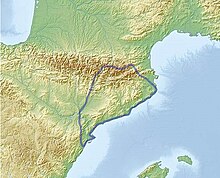
Kerameikos also known by its Latinized form Ceramicus, is an area of Athens, Greece, located to the northwest of the Acropolis, which includes an extensive area both within and outside the ancient city walls, on both sides of the Dipylon Gate and by the banks of the Eridanos River. It was the potters' quarter of the city, from which the English word "ceramic" is derived, and was also the site of an important cemetery and numerous funerary sculptures erected along the Sacred Way, a road from Athens to Eleusis.
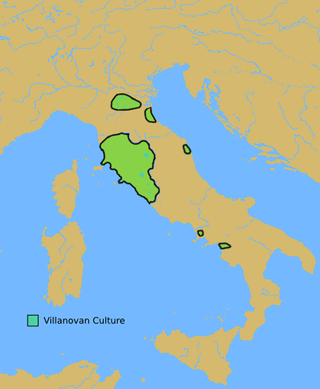
The Villanovan culture, regarded as the earliest phase of the Etruscan civilization, was the earliest Iron Age culture of Italy. It directly followed the Bronze Age Proto-Villanovan culture which branched off from the Urnfield culture of Central Europe. The name derives from the locality of Villanova, a fraction of the municipality of Castenaso in the Metropolitan City of Bologna where, between 1853 and 1855, Giovanni Gozzadini found the remains of a necropolis, bringing to light 193 tombs, of which there were 179 cremations and 14 inhumations.

The Argaric culture, named from the type site El Argar near the town of Antas, in what is now the province of Almería in southeastern Spain, is an Early Bronze Age culture which flourished between c. 2200 BC and 1550 BC.

This page concerns the prehistory of Brittany.

The South-Western Iberian Bronze is a loosely defined Bronze Age culture of Southern Portugal and nearby areas of SW Spain. It replaced the earlier urban and Megalithic existing in that same region in the Chalcolithic age.

The dolmens of Jersey are neolithic sites, including dolmens, in Jersey. They range over a wide period, from around 4800 BC to 2250 BC, these dates covering the periods roughly designated as Neolithic, or “new stone age”, to Chalcolithic, or “copper age”.

The Prehistoric Rock-Art Site of Escoural Cave is a structure known for its Paleolithic-era rock-art and funerary burial site, located in the Portuguese municipality of Montemor-o-Novo, in the civil parish of Santiago do Escoural.
San Jose de Moro is a Moche archaeological site in the Pacanga District, Chepén Province, La Libertad Region, of Northwestern Peru. The site served as a ceremonial funerary complex between the years 400 and 1000 AD.
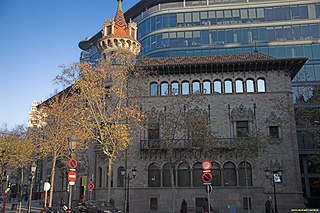
The Barcelona Provincial Council Local Museum Network, also known as Catalonia’s Biggest Museum, is a tool for support and collaboration from and for the museums of the province, which makes available to municipalities a series of services and actions aimed at improving, through the provision of direct services and research into viable formulas for supramunicipal cooperation, the management, conservation and dissemination of heritage and the museum facilities of the towns of Barcelona province. It is managed from the Cultural Heritage Office, which in turn depends on the Department of Knowledge and New Technologies of Barcelona Provincial Council.

The secondary burial, or “double funeral” is a feature of prehistoric and historic gravesites. The term refers to remains that represent an exhumation and reburial, whether intentional or accidental.
Bray's Cave is a limestone cave in the British Overseas Territory of Gibraltar. The cave has yielded several significant human remains and artifacts from the Neolithic and Bronze Ages. Three almost complete skulls were discovered, along with other cranial fragments from multiple individuals. This suggests that people repeatedly returned to the site to reuse it as a burial ground.

The dolmen del prado de Lácara is a megalithic monument known as a passage tomb. It is located northwest of the Spanish city of Mérida, in the province of Badajoz. It is located next to the EX-214 road, which connects Aljucén with La Nava de Santiago. It is a notable megalithic tomb, built during the late Neolithic towards the end of the 4th millennium BC or early 3rd millennium BC. It is one of the most monumental and well preserved sites in the Extremadura region, which is why it was declared a site of cultural interest in 1912 and a National Monument in 1931.

Rotbav “La Pârâuț” is a Bronze Age site in southeastern Transylvania, Romania, located at the southern border of the modern village of Rotbav, in Feldioara Commune, and 20 km north of Braşov, capital of the county by the same name. The settlement of Rotbav is situated upon a high terrace formation above the Olt River. Its importance lies in a long stratigraphy comprising the timespan from the Early Bronze Age to the Bronze Age / Iron Age transition. It is the most extensively researched site of this period in the region.
Peñas de la Cerca is an Iron Age hillfort, in the province of Zamora, north-western Spain. It is near a hamlet called Rionegrito de Sanabria. Situated in a mountainous region on the north-western edge of the Northern Sub-Plateau, the site controls the middle of the Tera valley, between the natural shires of Sanabria and Carballeda (plateau).
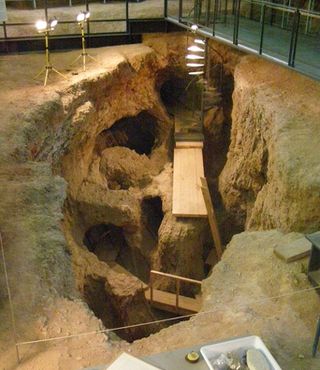
The Gavà Mines, also known as Can Tintorer Mines, is a pre-historic (Neolithic) archaeological site that occupies the Can Tintorer, Ferreres and Rocabruna areas in the municipality of Gavà. The site is under care of the Gavà Museum and the Gavà Mines Archaeological Park.

The Menhir Museum, or Civic Archaeological Museum of the Menhir Statues, located in the Aymerich Palace in the village of Laconi, is a unique museum of its kind for its rich collection of steles found in the Laconi area, with the first discovery in 1969.
The Armorican Tumulus culture is a Bronze Age culture, located in the western part of the Armorican peninsula of France. It is known through more than a thousand burial sites covered by a tumulus or otherwise. The culture is renowned for some exceptionally richly endowed burials of chieftains of the time, which are contemporary with the elite of the Wessex culture, in England, and the Únětice culture, in Central Europe.
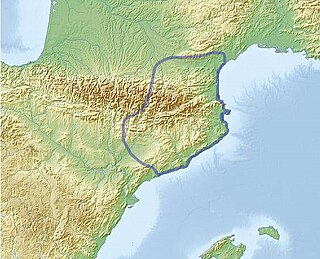
The Veraza Culture was a Chalcolithic culture that extended over the half north of Catalonia and the southern French departments of Aude and Pyrénées-Orientales, in a period between 3500 and 2000 BC.
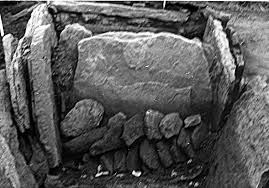
The Montobolo culture was a postcardial culture which extended over the départament of Pyrénees-Orientales and the provinces of Girona and Barcelona in eastern Catalonia between 4700 aC and 3800 aC.

The Pyrenean Bronze is a regional European Bronze Age culture, known from archaeological facies, that spread through the Spanish provinces of Girona, Barcelona, Lleida and the eastern half of Huesca; also it spread through the French departments of the Pyrenees-Orientales and Aude.
